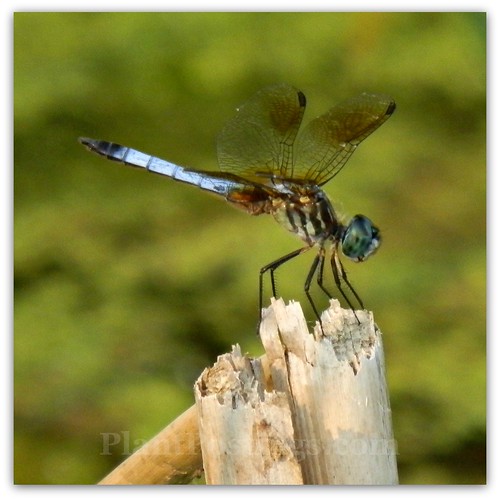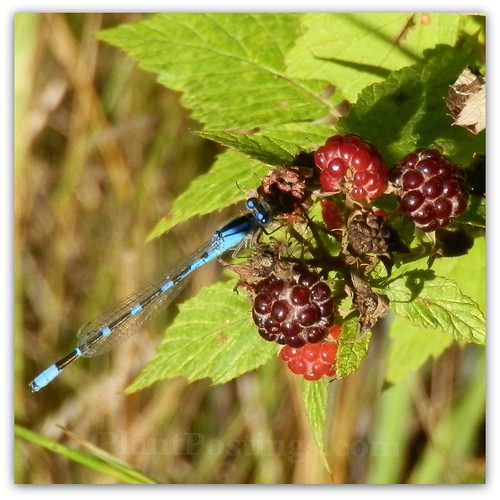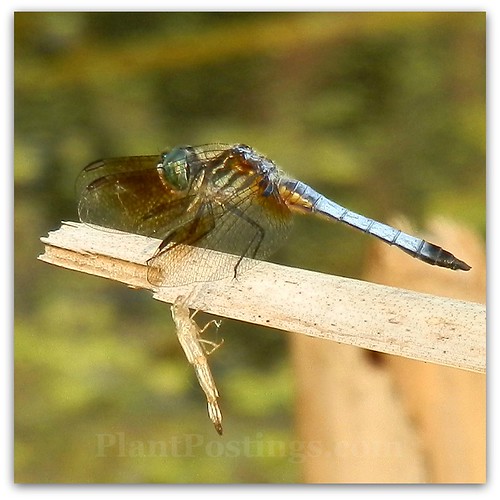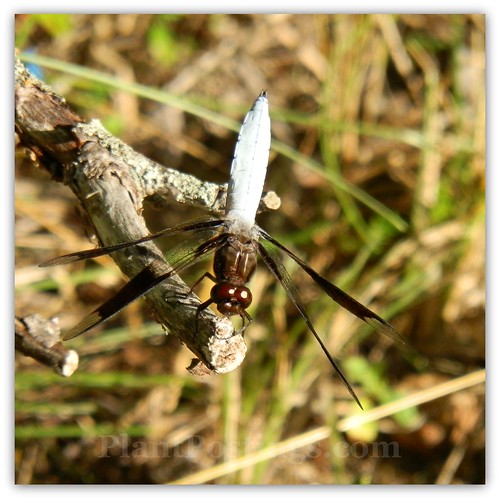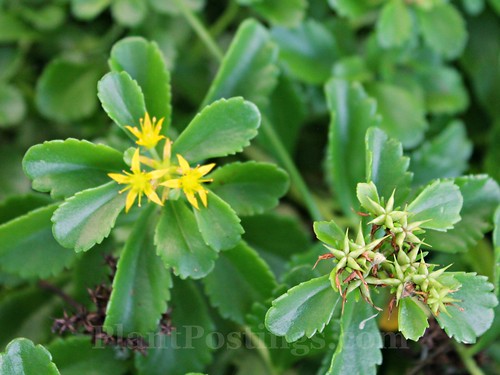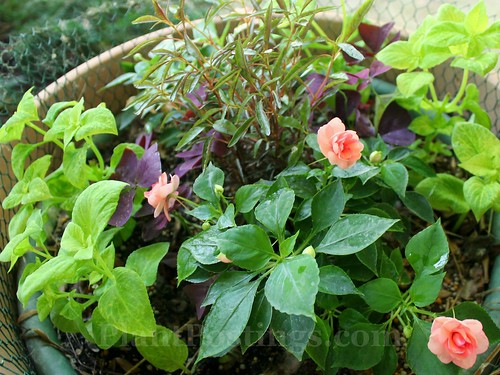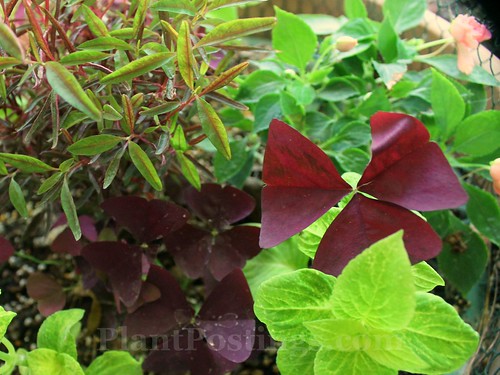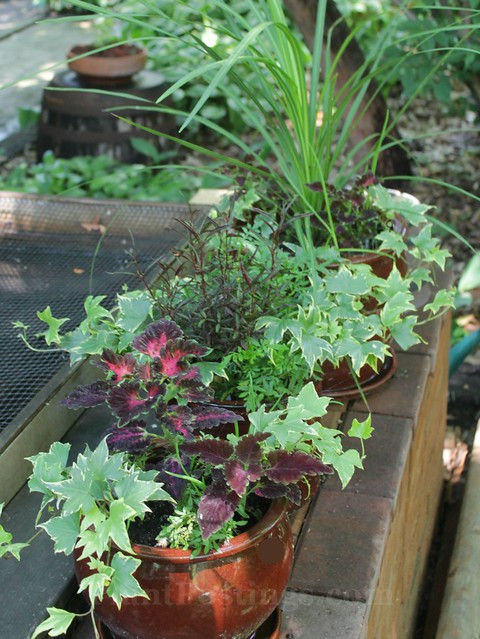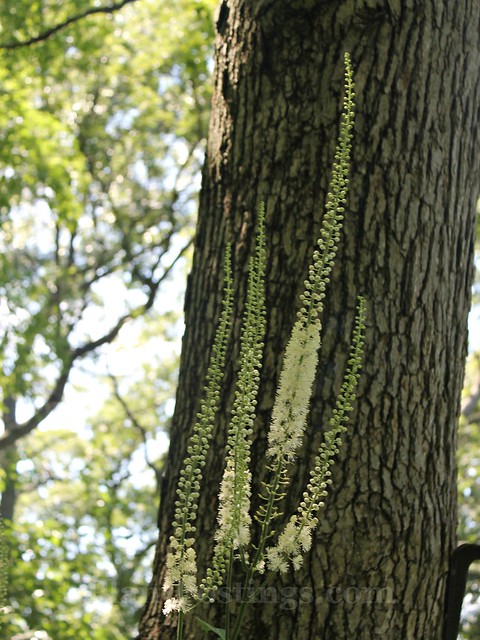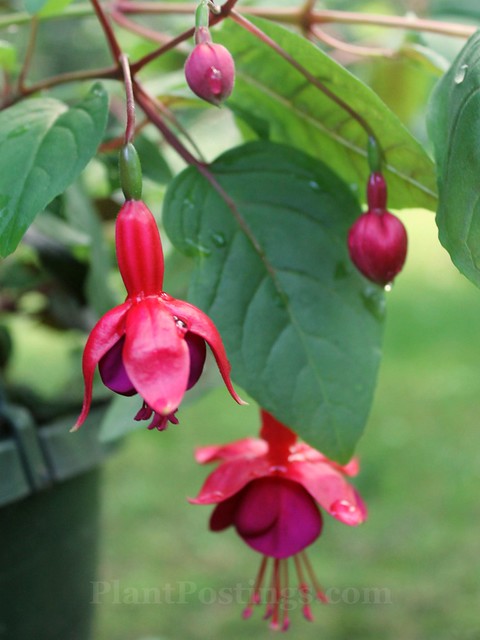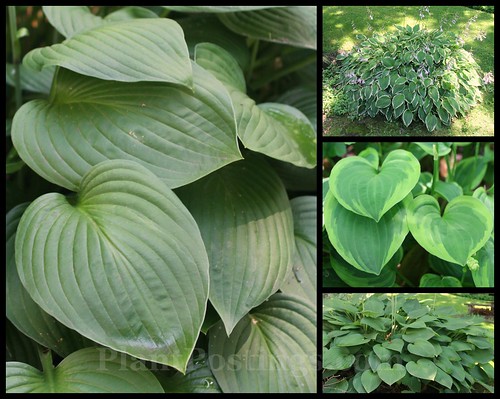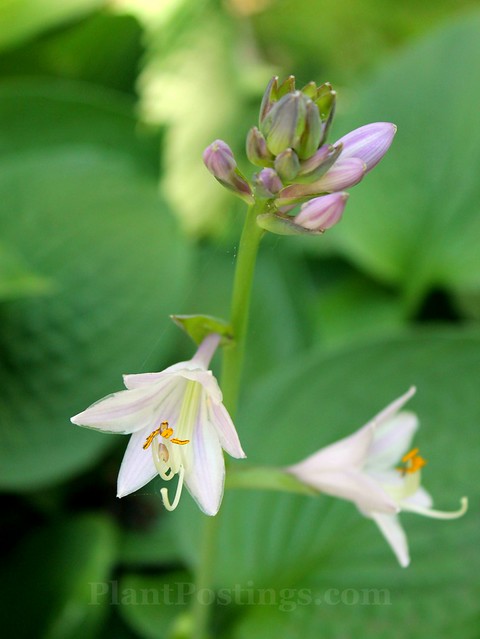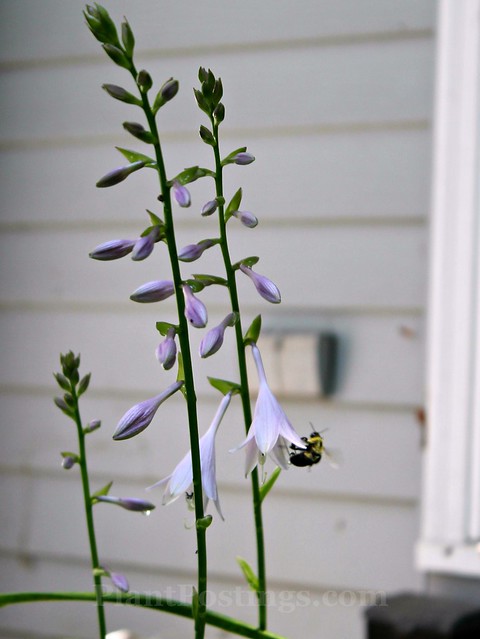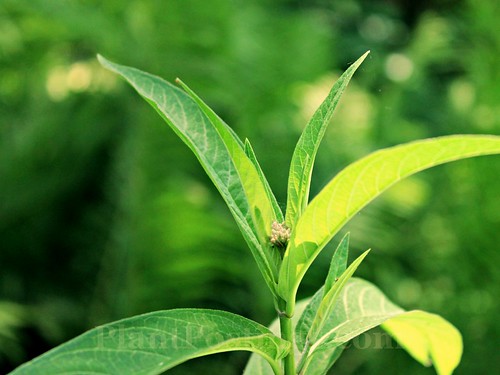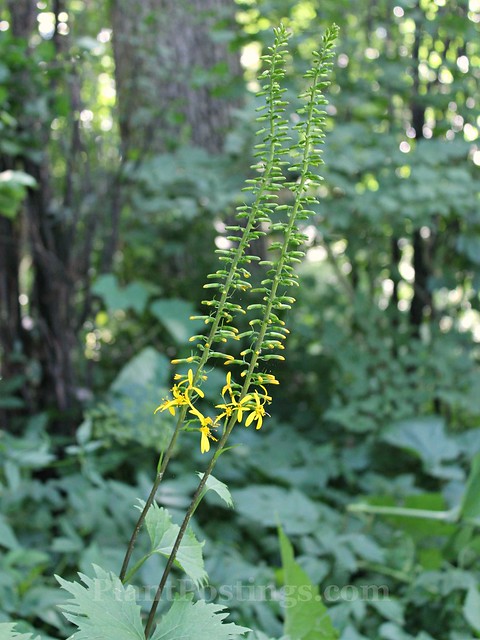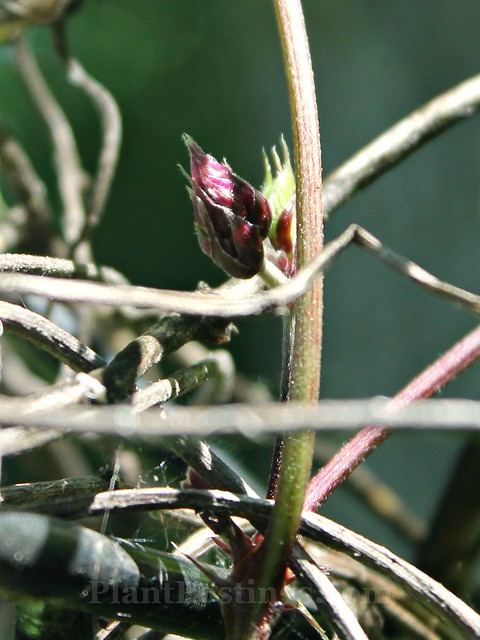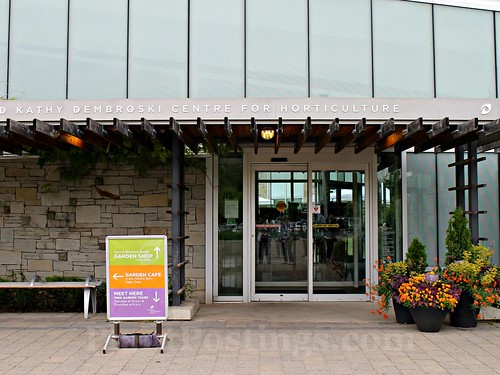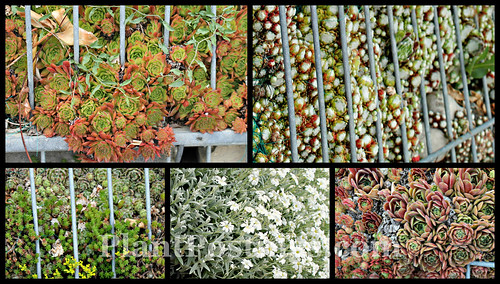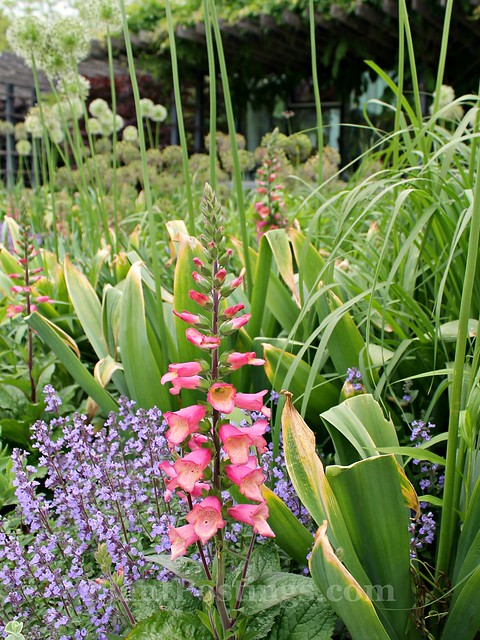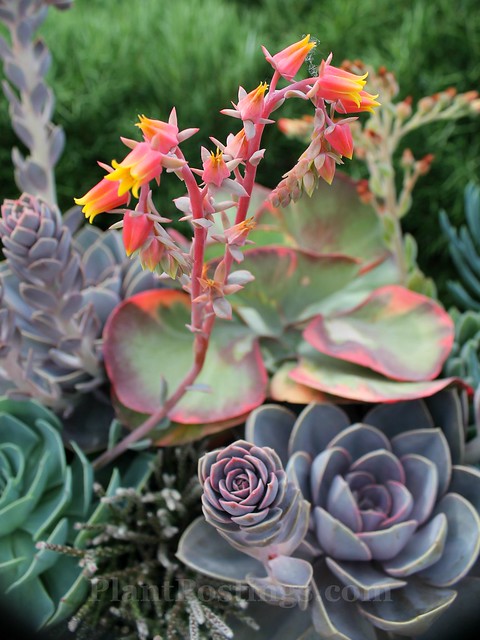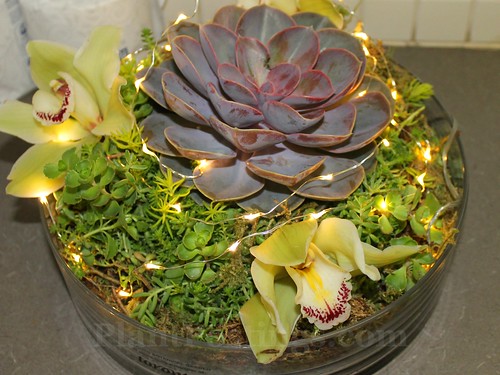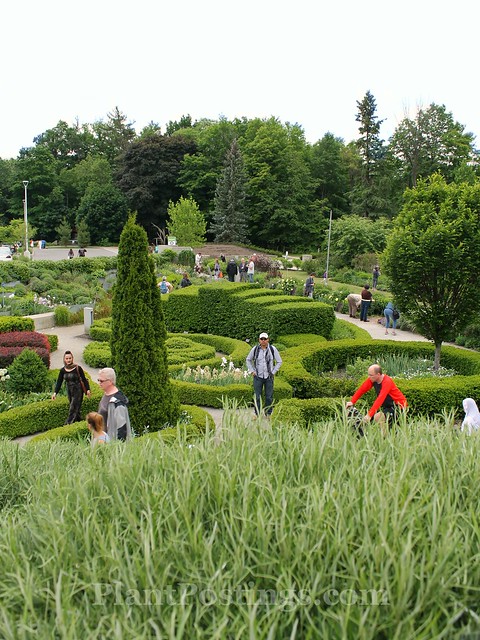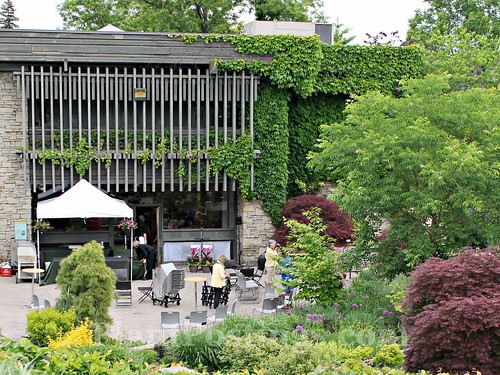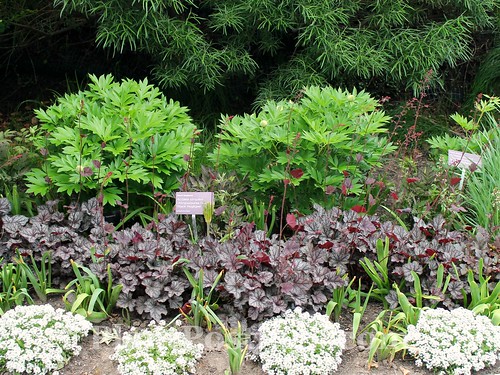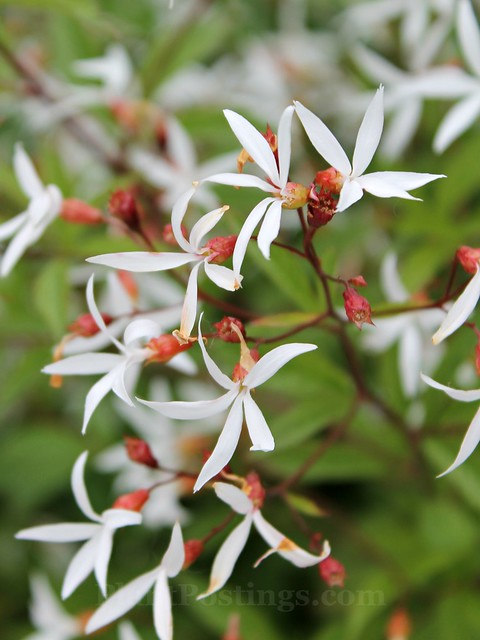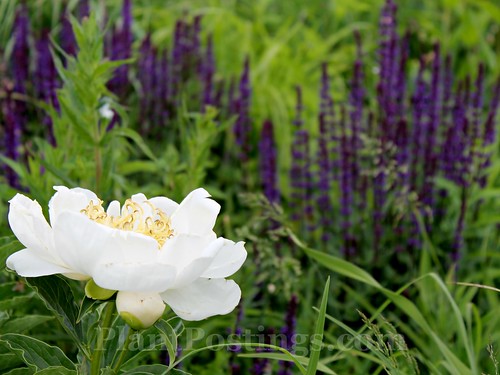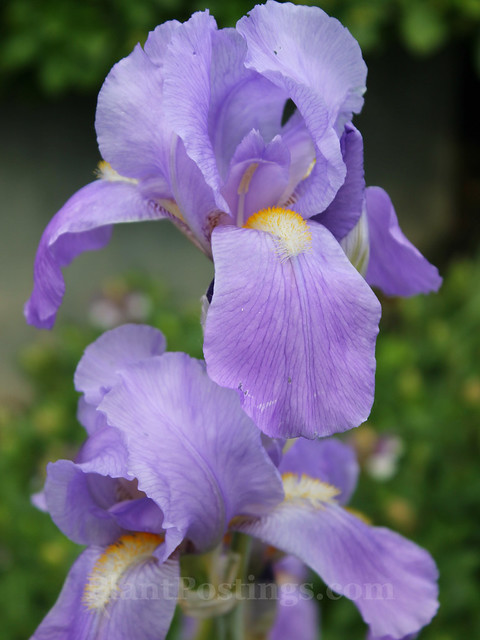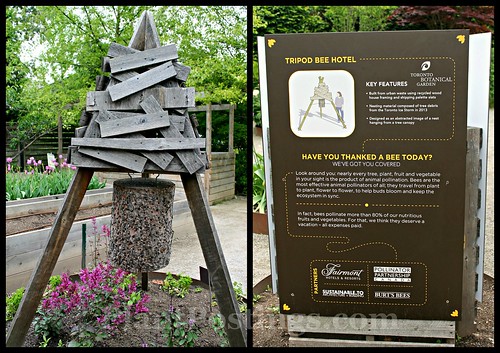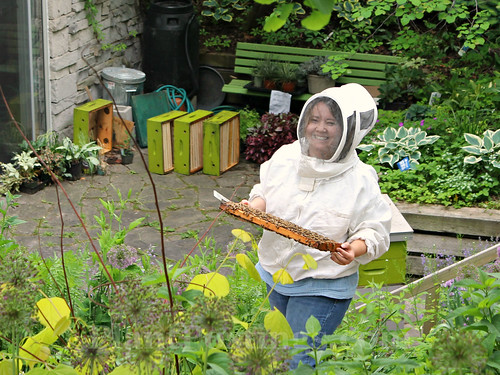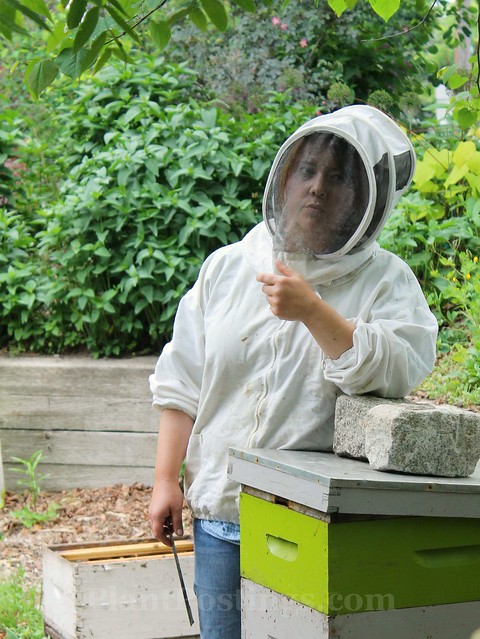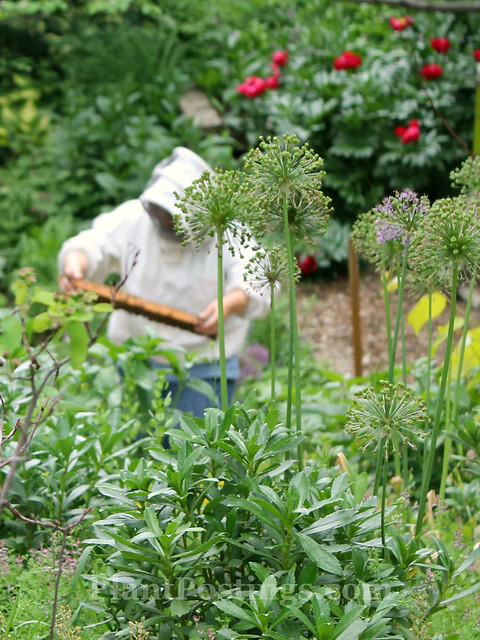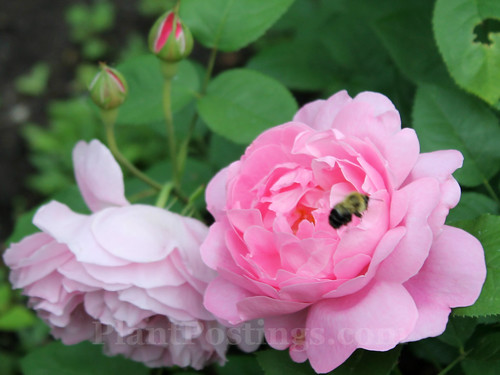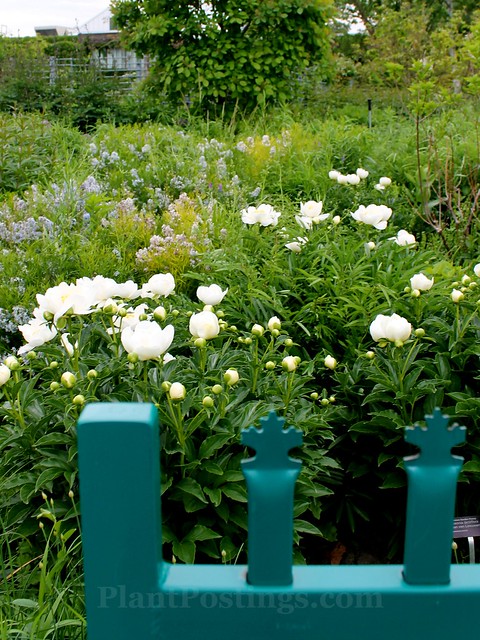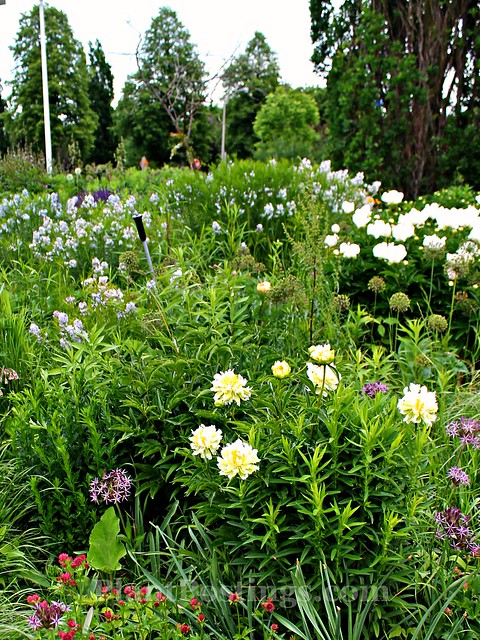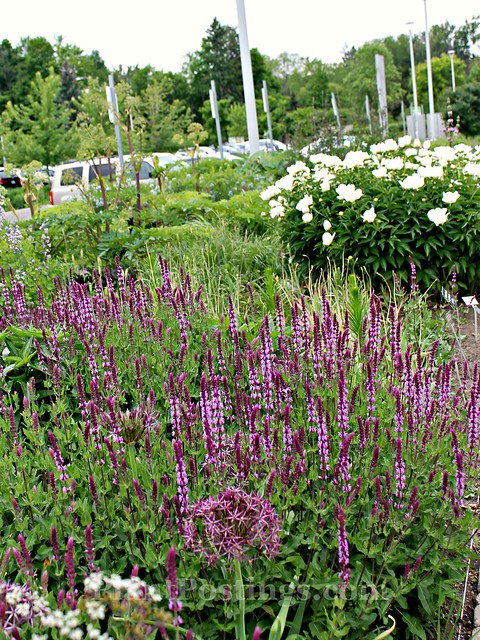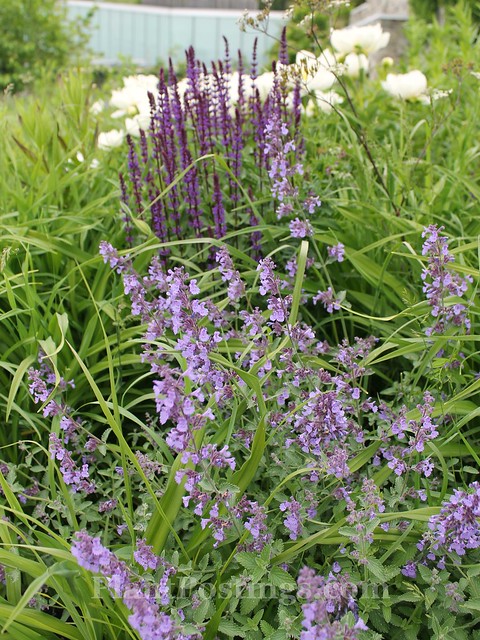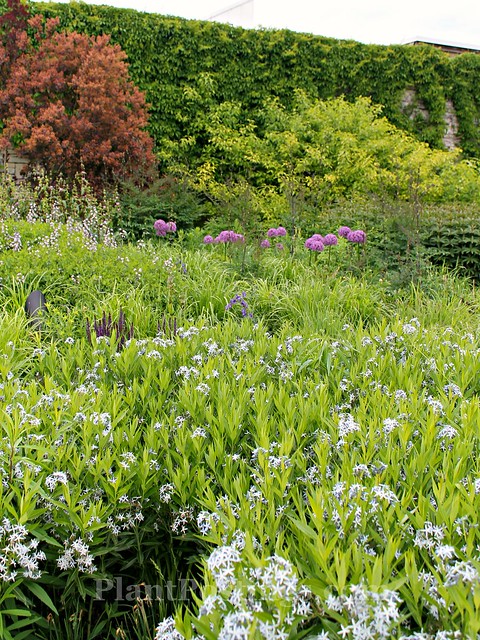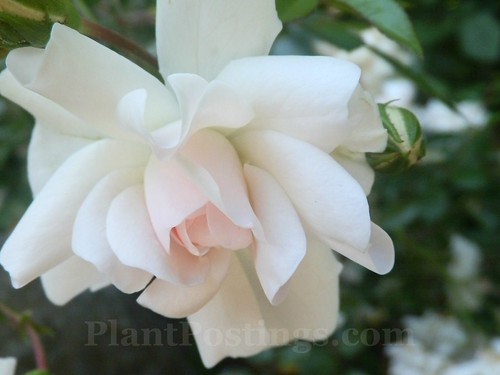
I'd been meaning to get over to Madison's Olbrich Botanical Gardens for weeks. I enjoy viewing and photographing roses, even if I don't have many myself.
I finally made time for a visit last week, and while I often think of June as the best month for viewing roses, there were plenty of midsummer and ever-blooming beauties to enjoy.
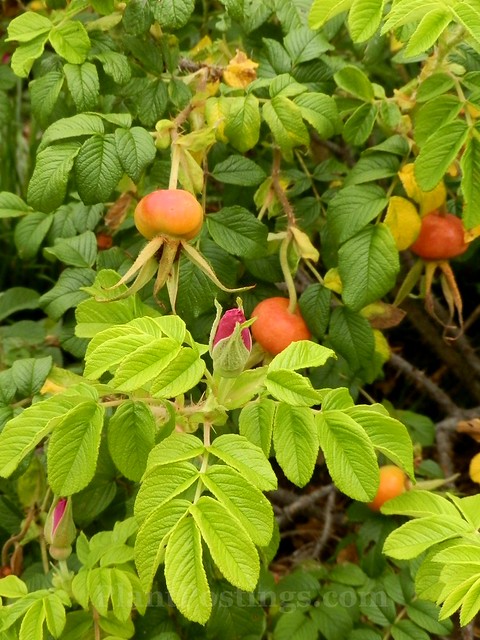
I couldn't find the marker for this Rugosa, but it offered the full spectrum of interest--giant hips, blooms, buds, and gorgeous chartreuse foliage. It might be 'Charles Albenel,' shown later in this post.
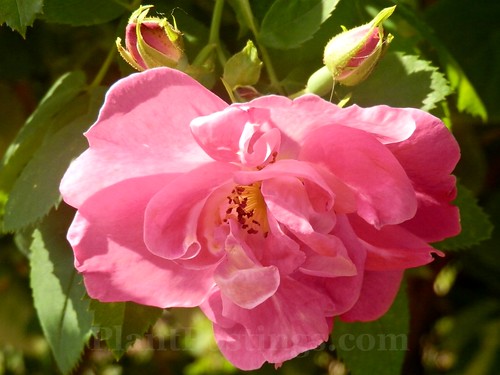
This 'William Baffin' Kordesii rose seemed the epitome of the old-fashioned romantic rose--rich, gentle pink color, with petals gently draped around the stamens and the stigma.
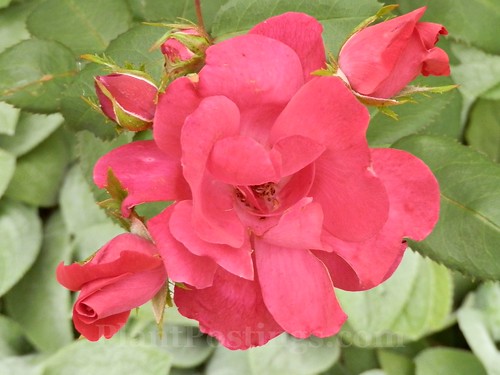
This Knockout Floribunda, 'RADrazz,' also had a pretty color, and seemed a prolific bloomer.
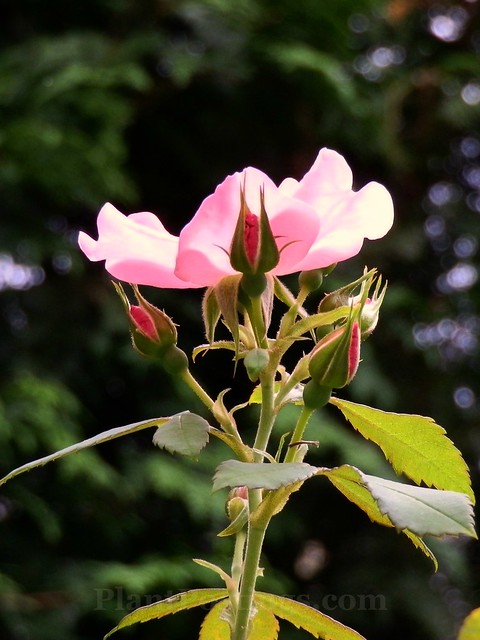
One of my favorites was this 'Polar Joy' tree rose. It was very tall--perhaps seven feet? I had to photograph up toward some of the blooms.

A lower branch with shadier conditions revealed the unique soft, rose-pink color of 'Polar Joy's' buds and flowers. This one is marketed as the "only truly hardy tree rose" by several vendors--hardy to zone 4.

'Sea Foam' shrub rose is certainly true to its name. It looked soft enough to dissolve in the hand.
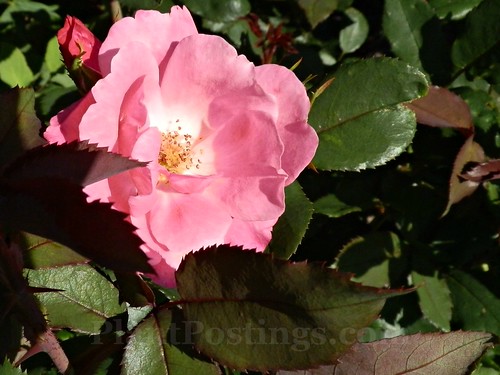
'RADcon,' was a lovely pink Knock Out shrub rose, which apparently tolerates part shade (note to self).
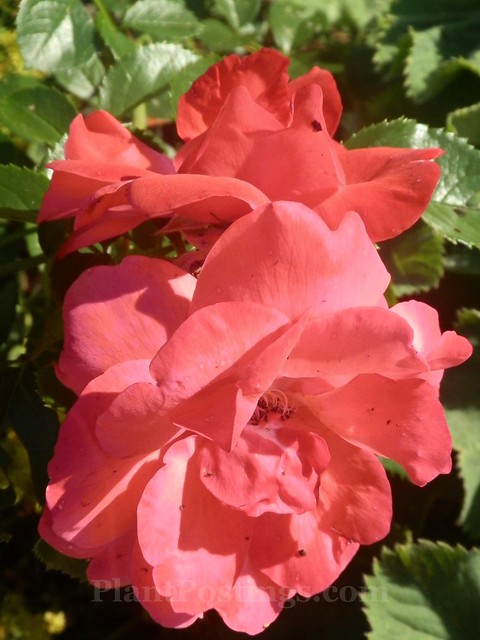
The color of 'Lady Elsie May,' also a shrub rose, caught my eye. With varied light and depending on the age of the bloom, it looked coral/pink to warm red.
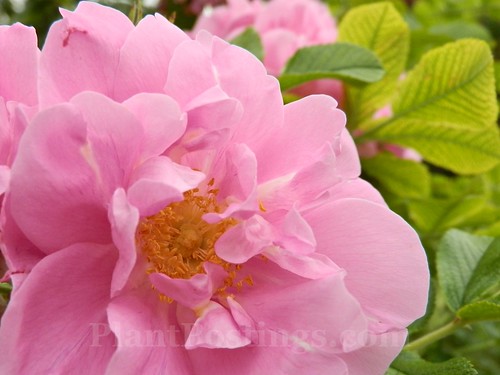
More romance and color eye candy here, with 'Jens Munk,' a Rugosa rose. Swoon.
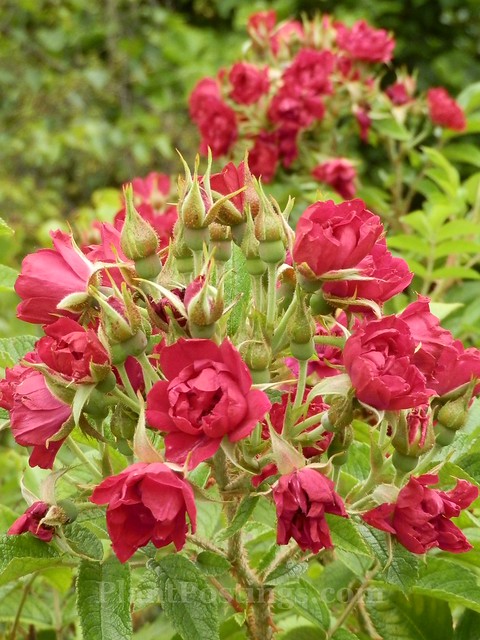
'Grootendorst Supreme,' another Rugosa, had prolific clusters of small blooms and buds.
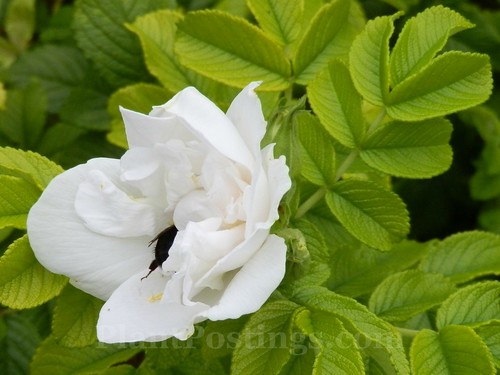
The pollinators enjoyed 'Blanc Double de Coubert' Rugosa.
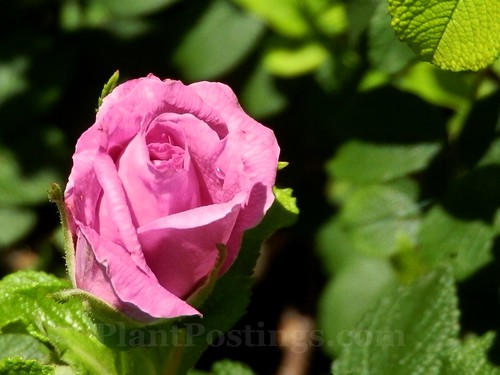
'Yankee Lady' Rugosa was much more stunning than the bright, sunlit image here, but you get the idea.
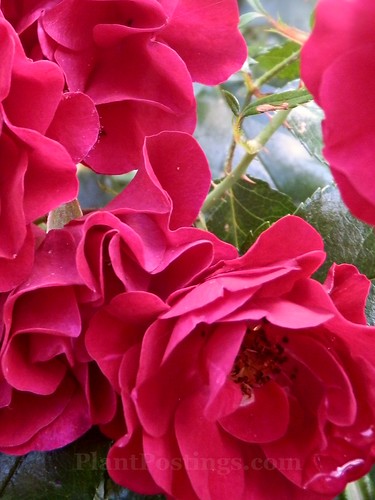
It was the form of 'MEIpsidue,' a Fire Meidiland Shrub Rose, that was alluring to me--resembling dramatic, draping flamenco skirts.
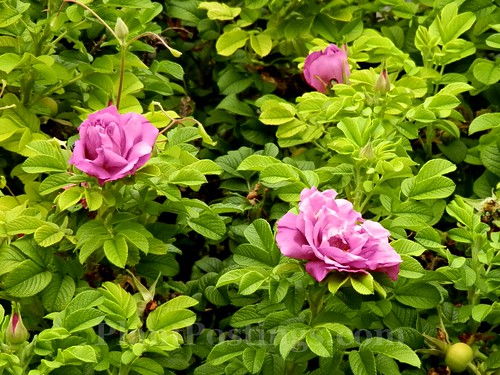
Obviously, the Rugosas were in their glory, including 'Charles Albenel.'
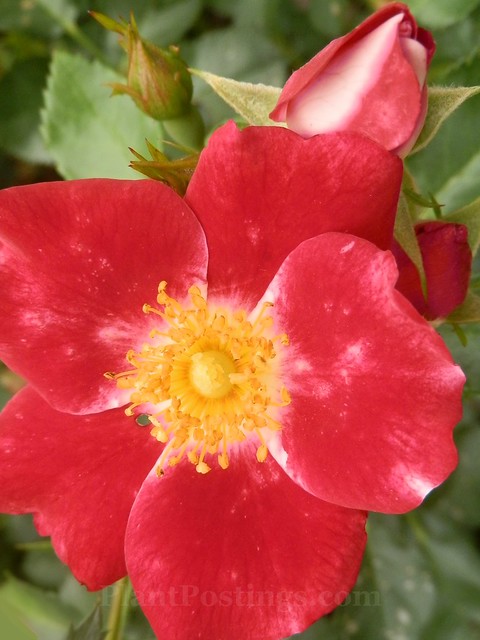
One of the most unique roses blooming in mid-July was 'Carefree Spirit,' an All-American Rose Selection.
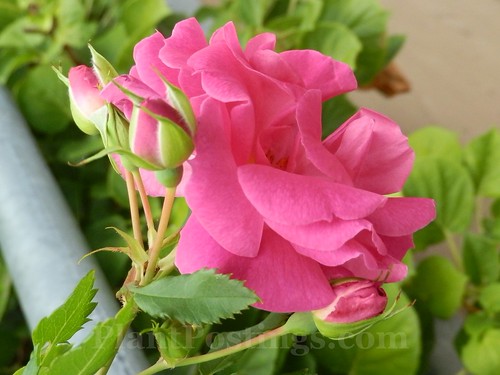
'Captain Samuel Holland' was truly dreamy, with full layers of petals and gorgeous buds draping over fencing. This rose is marketed as both a shrub and and a climbing rose.
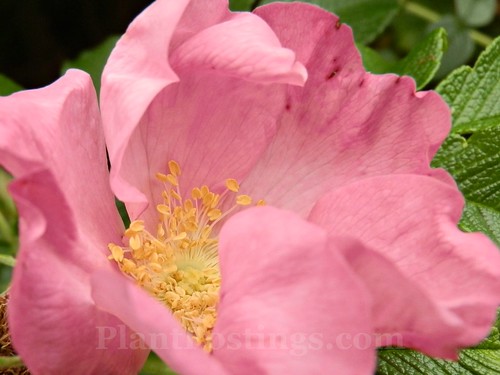
And of course I was enchanted over this 'Fru Dagmar Hastrup' Rugosa.
There were many more, and quite a few had lovely scents. The bees were particularly enamored of the Rugosas. I captured several of them in a short, minute-long wrap-up video. Enjoy!
Mosquitoes bugging you? Visit the "products" tab or click here for a solution that really works and doesn't contain DEET.
